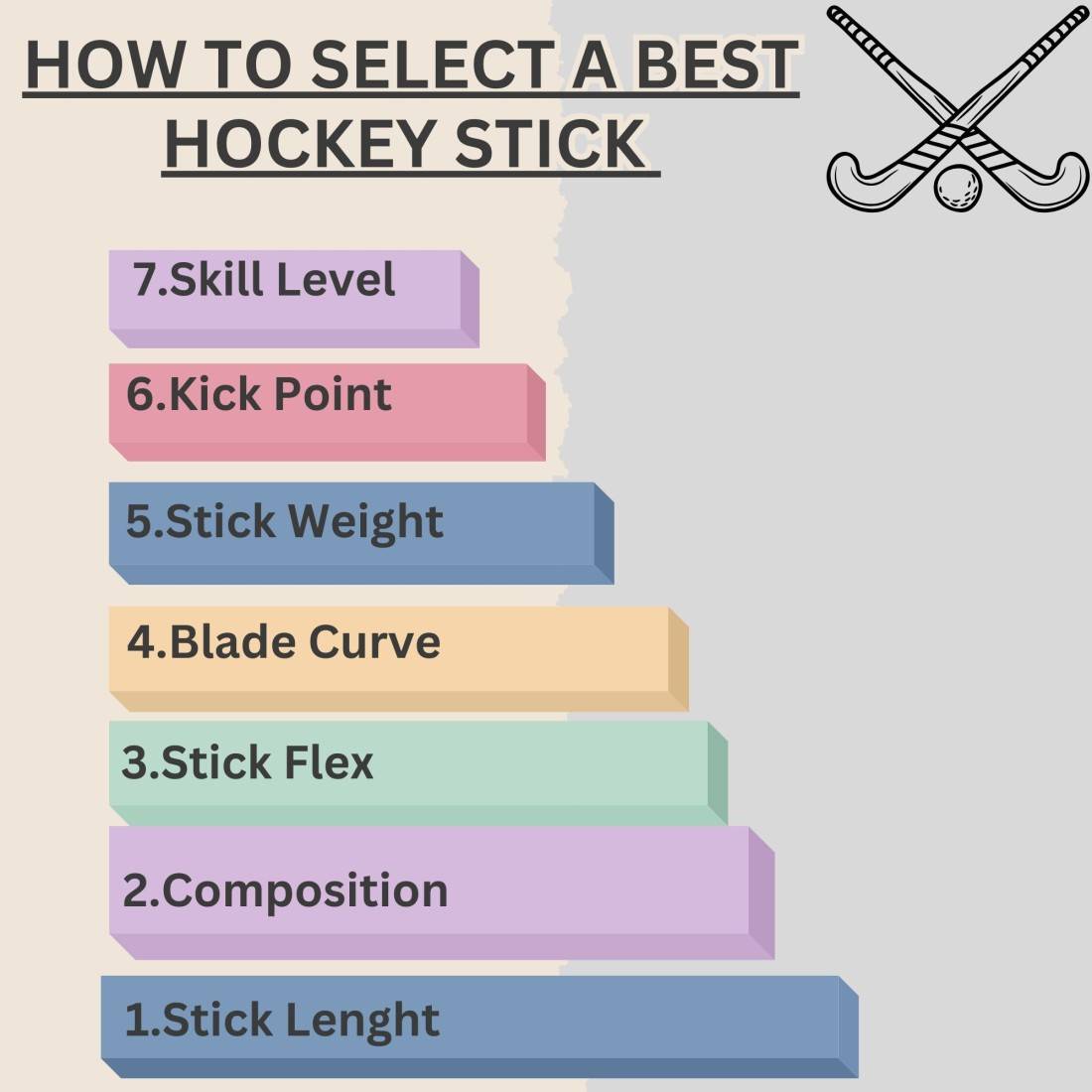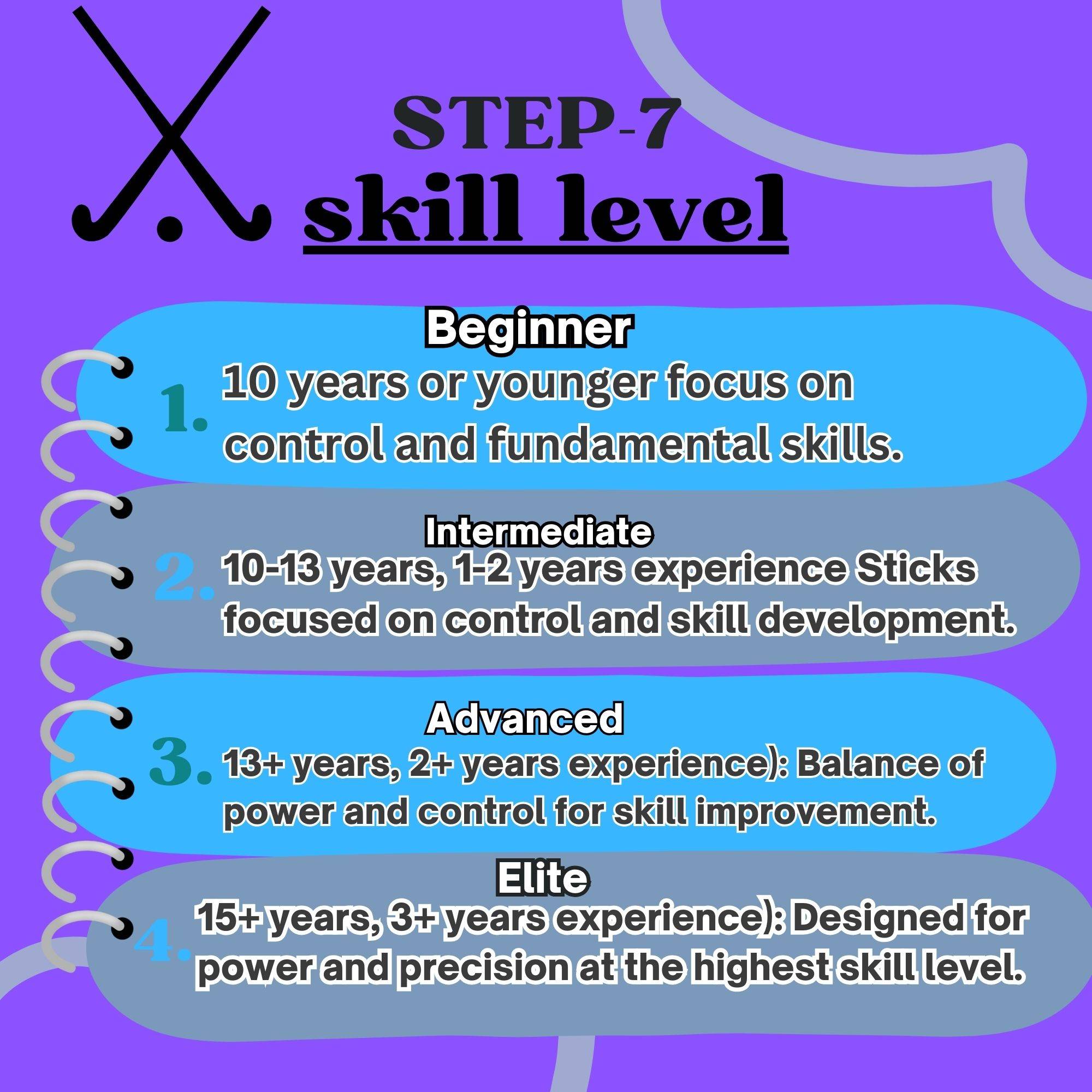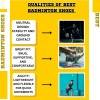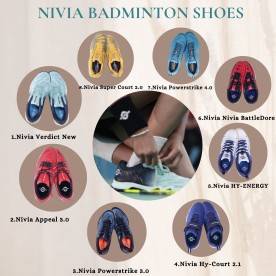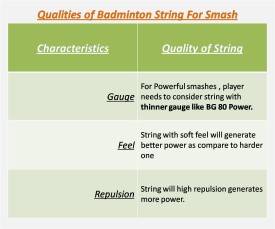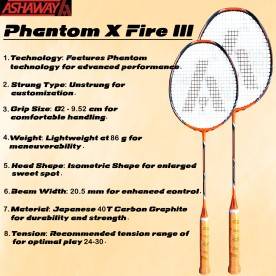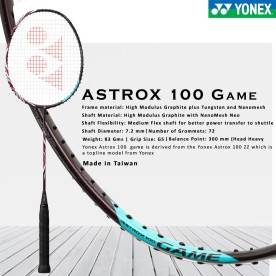Whether you’re an experienced hockey player or new to this wonderful game, selecting the right hockey stick can significantly impact your performance on the field. Hockey sticks play an essential role in determining how effectively you play, and in today’s market, there is a wide variety of hockey sticks available to different formats, sizes, skill levels, and budgets. Understanding how to choose the best hockey stick for your needs is crucial to enhancing your game. This guide will walk you through the key factors to consider when selecting a hockey stick, ensuring you make the best choice for your playing style and preferences.
Key Considerations When Choosing a Hockey Stick
1. Stick Length
The length of the hockey stick is one of the most critical factors to consider. The correct stick length ensures proper control and handling during gameplay. Here are some key points to remember:
- General Rule: When standing on the ground, the stick should reach somewhere between your chin and nose.
- Position-Specific Preferences: Defensive players and midfielders may prefer a longer stick, as it offers extended reach for tackling and intercepting. Conversely, offensive players often favor shorter sticks, which allow for better control and maneuverability.
- Personal Preference: Ultimately, the stick length should feel comfortable and complement your style of play.
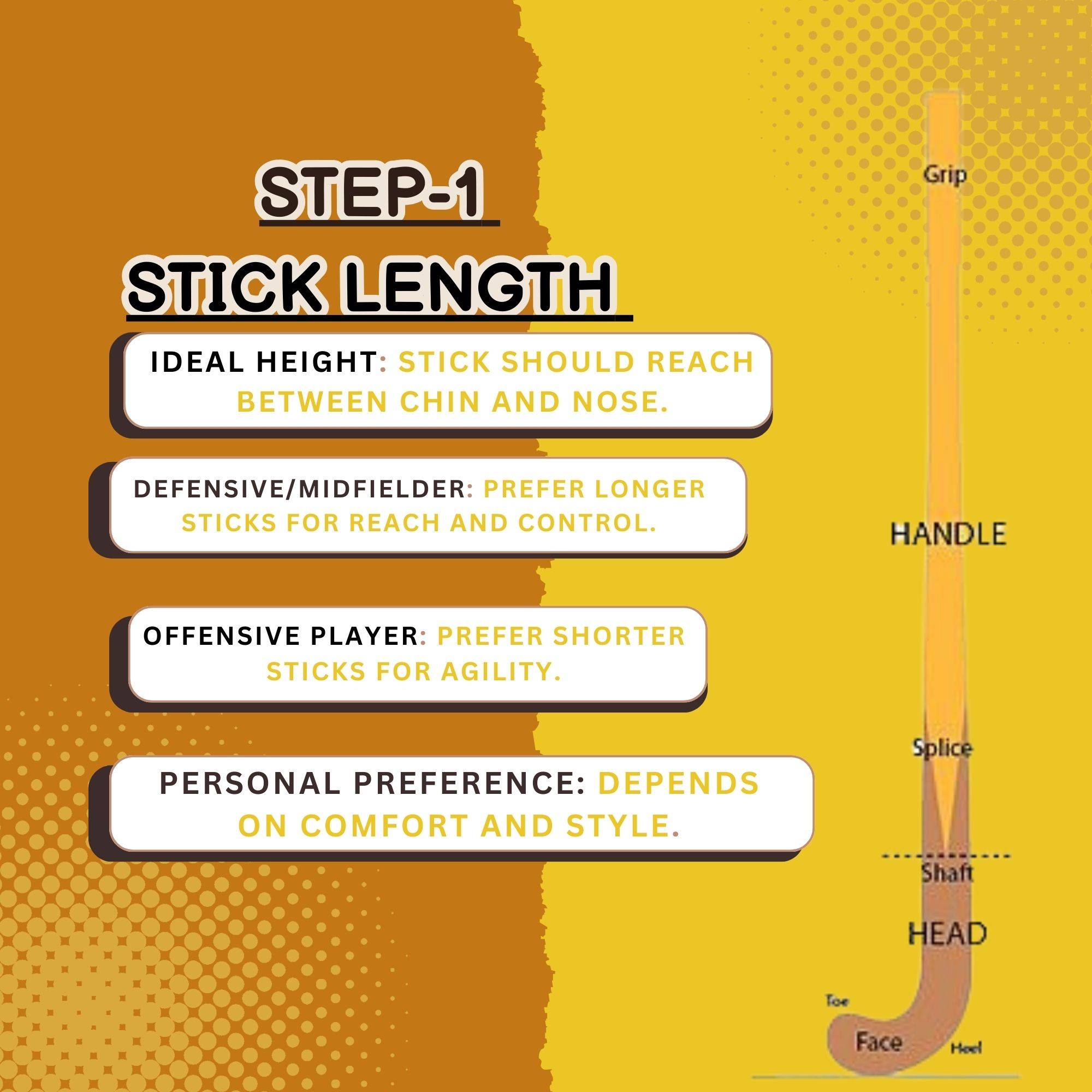
2. Composition of the Stick
Hockey sticks are made from various materials, each offering unique benefits. Understanding the composition will help you select a stick that aligns with your needs:
- Carbon: Known for its stiffness and ability to deliver powerful shots, carbon sticks are ideal for players seeking strength and speed in their gameplay.
- Fiberglass: This material adds durability and strength to the stick. When combined with carbon, it enhances support and resilience, making it suitable for intermediate to advanced players.
- Wood: Wooden sticks are less stiff, offering more flexibility and forgiveness. They are an excellent choice for beginners or players who value precision and control.
- Aramid: This material adds shock absorption and durability, making the stick more resistant to impact.
The right material depends on your skill level and playing style. Advanced players may prefer the power and responsiveness of carbon-fiber sticks, while beginners might opt for the control and affordability of wooden or fiberglass sticks.
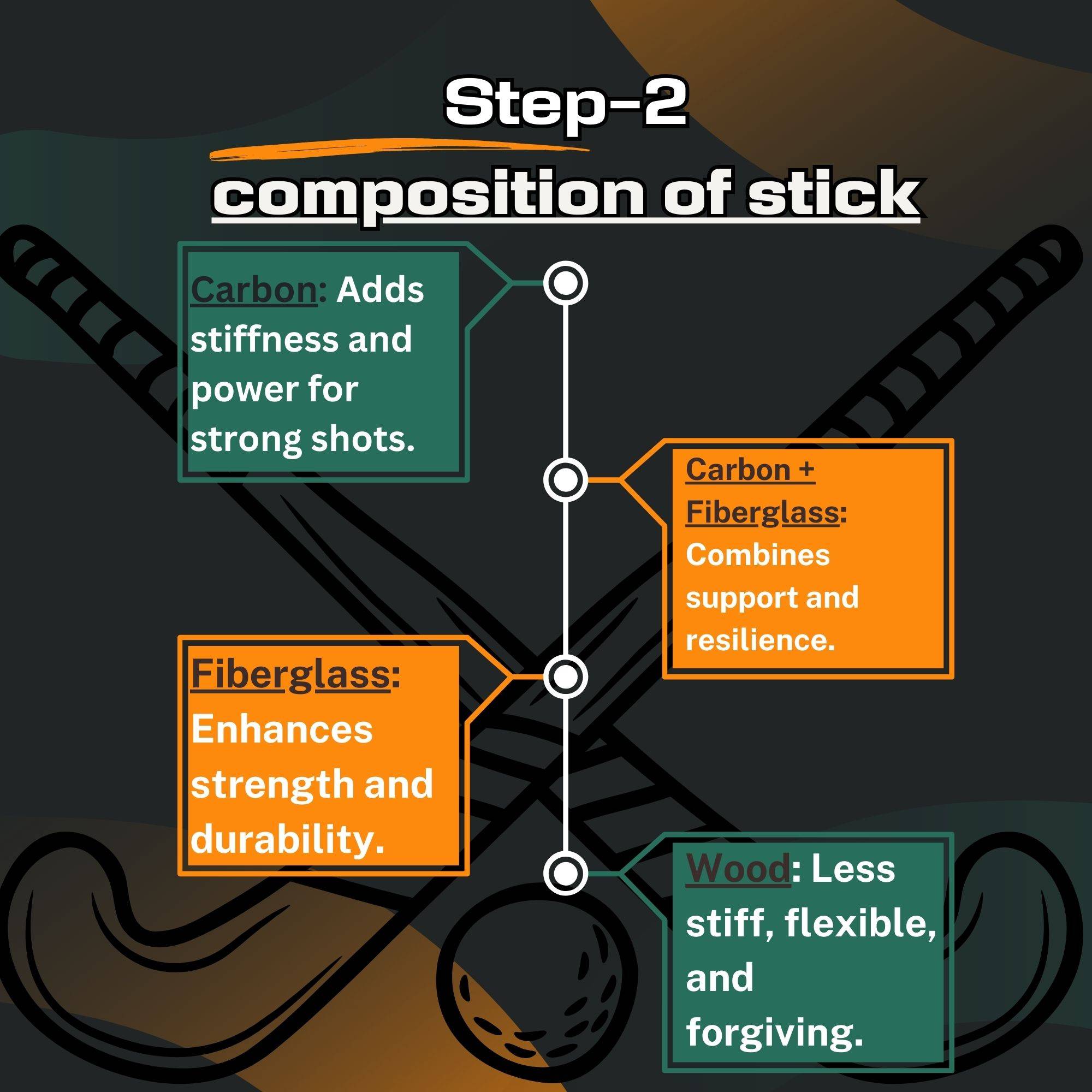
3. Stick Flex
Flex refers to how much a stick bends when force is applied. The flex rating is an essential factor that affects shooting power and control:
- Low Flex: Suitable for younger or lighter players, as it requires less force to bend the stick.
- High Flex: Designed for stronger or more experienced players who can generate more power.
- Rule of Thumb: Choose a stick with a flex rating that is roughly half your body weight. For example, a player weighing 150 pounds might opt for a stick with a 75-flex rating.
- The appropriate flex allows you to optimize energy transfer during shots, improving both accuracy and power.
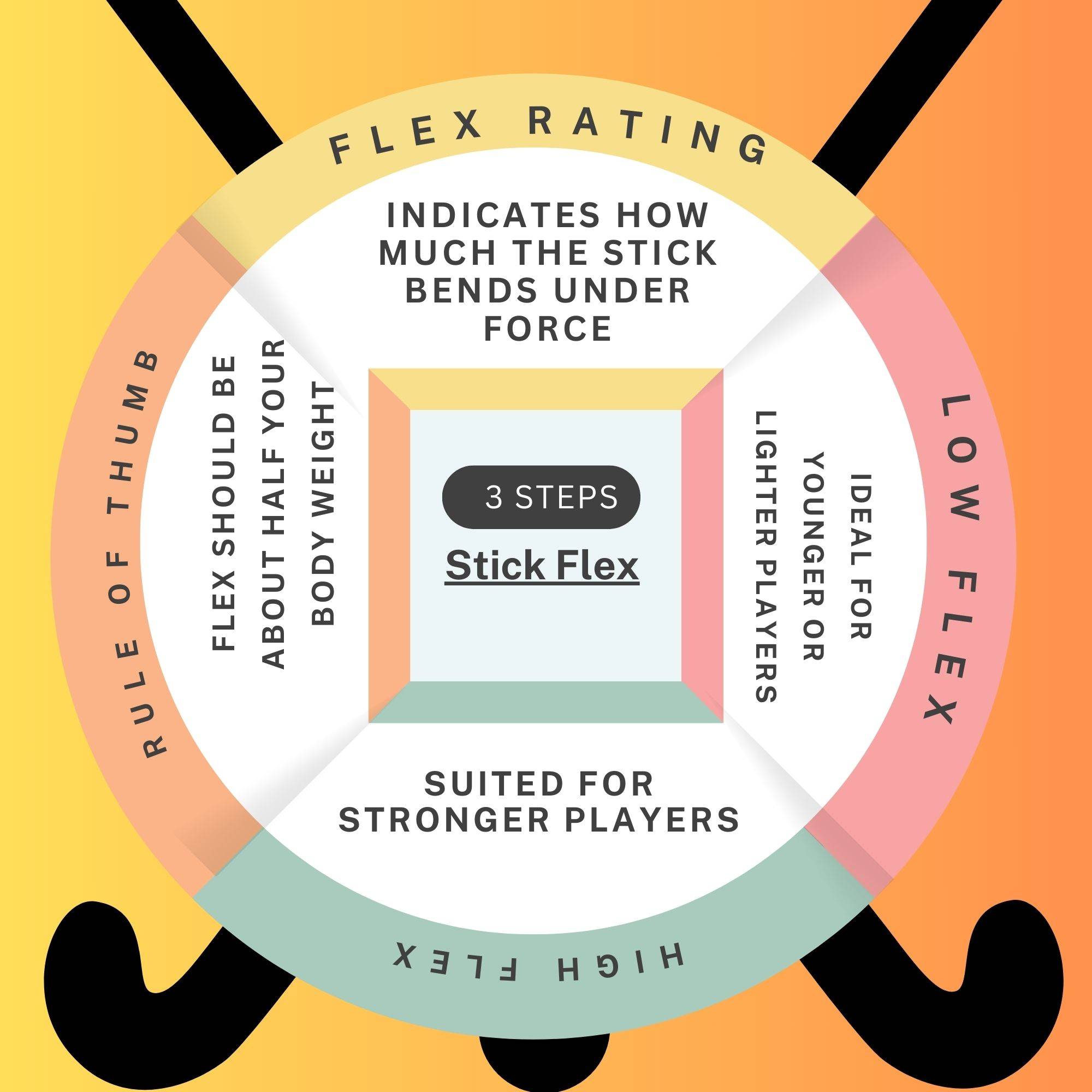
4. Blade Curve
The curve of the blade significantly impacts how you handle the puck and execute shots. There are three main factors to consider:
- Depth of Curve: A more pronounced curve improves puck control and shooting accuracy. It is particularly useful for wrist shots and drag flicks.
- Flat Blade: A flatter blade provides better control for passing and receiving, making it ideal for playmakers.
- Personal Style: Choose a blade curve that complements your playing style and enhances your strengths on the field.
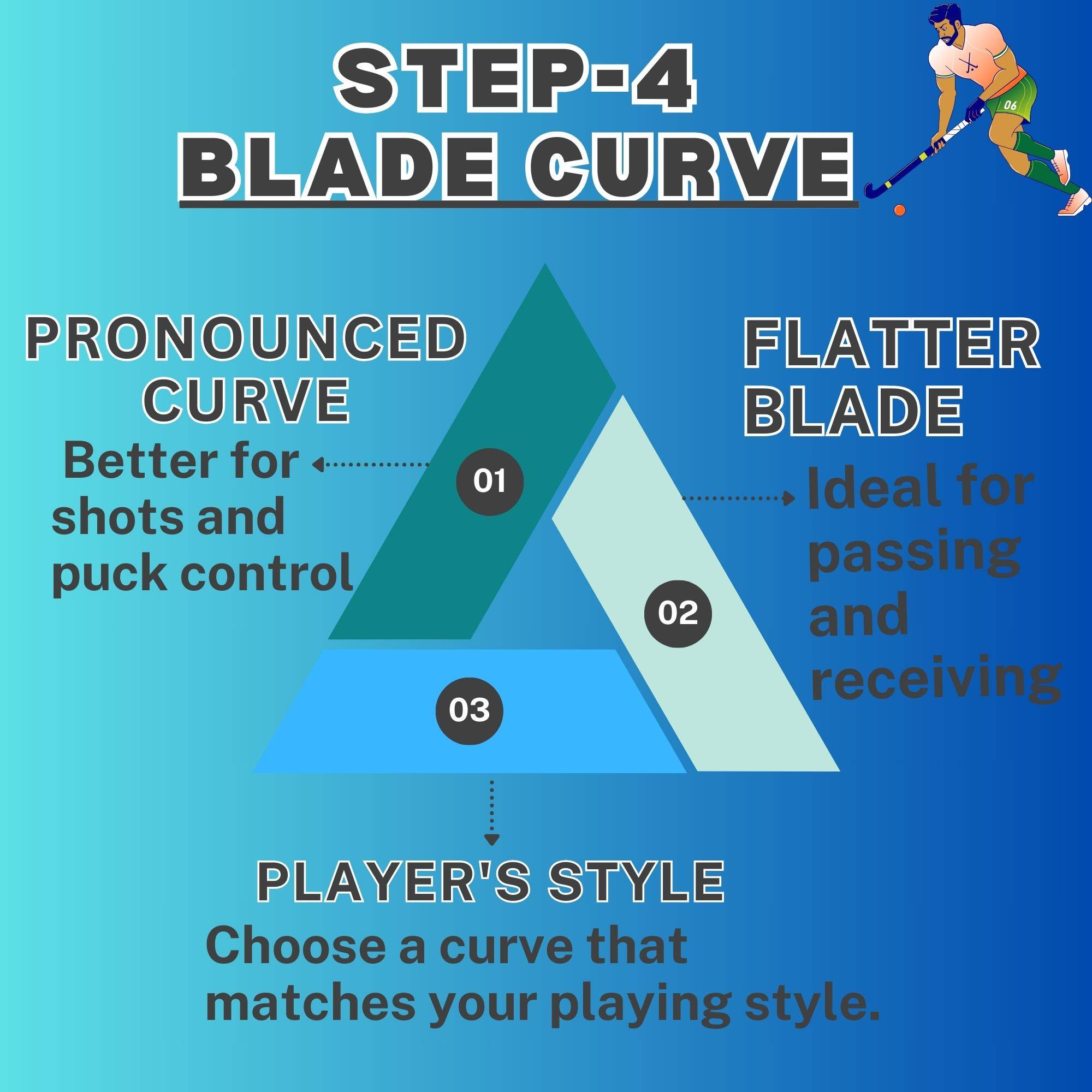
5. Stick Weight
The weight of a hockey stick plays a crucial role in determining its usability and effectiveness. Here’s how to navigate weight considerations:
- Lightweight Sticks: These are popular among attackers, as they allow for quicker movements and better stick handling. Lightweight sticks are generally more expensive due to advanced materials and technology.
- Heavier Sticks: Defenders often prefer heavier sticks, as they offer more stability for tackles, long passes, and powerful hits.
- Beginners: It is recommended that beginners opt for lightweight sticks to develop their skills and improve control.
- Remember, the best stick weight is the one that feels natural in your hands and allows you to play without strain.
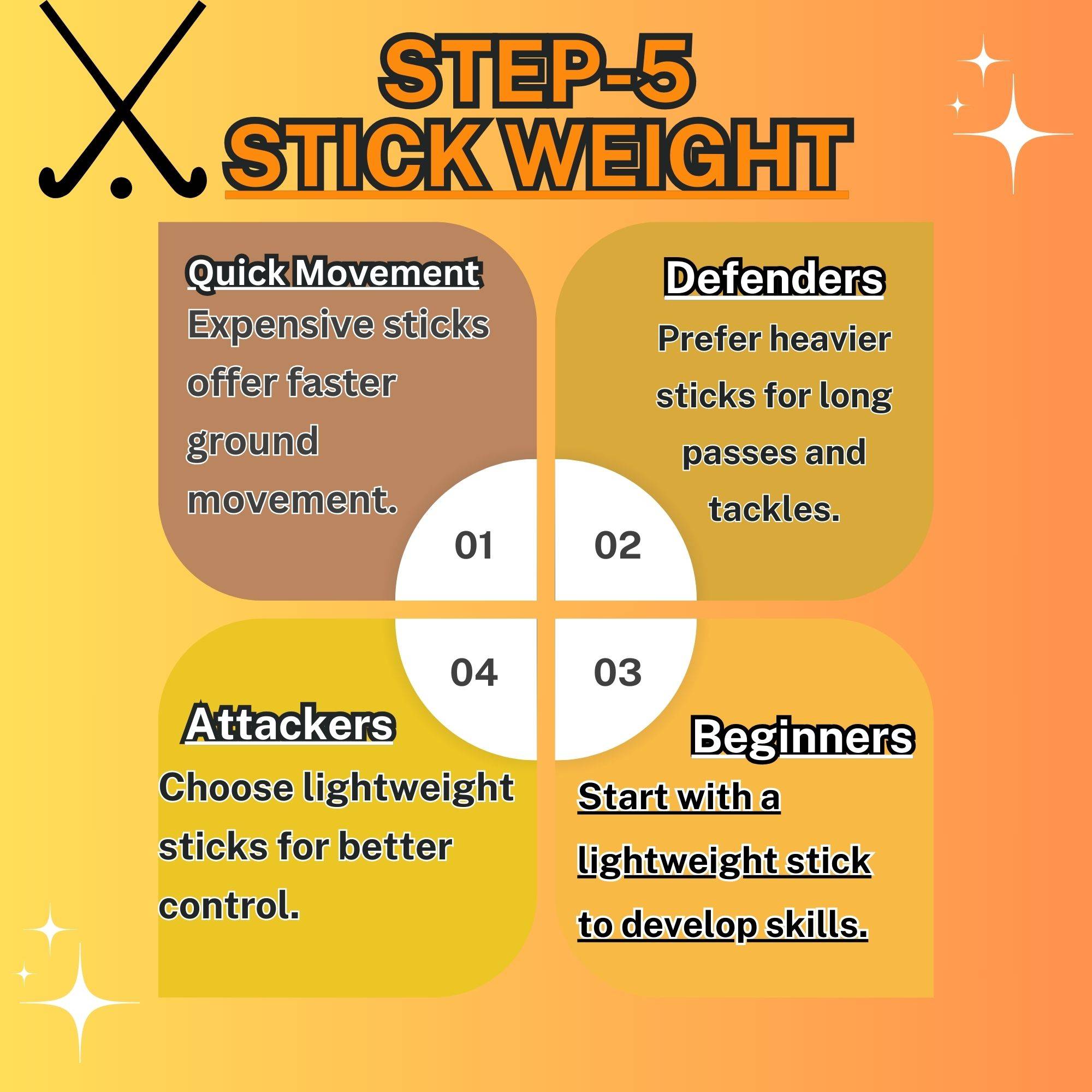
6. Kick Point
The kick point is a relatively new feature in hockey stick design and refers to the part of the shaft that flexes most during a shot. Different kick points suit different playing styles:
- Low Kick Point: Offers a quick puck release and is ideal for fast-paced players who rely on speed and precision.
- Mid Kick Point: Provides a balance between power and quickness, making it suitable for all-around players.
- High Kick Point: Enables maximum energy transfer for powerful shots and long passes, making it a favorite among defenders.
- Some composite sticks have shafts designed to optimize the kick point for specific styles of play.
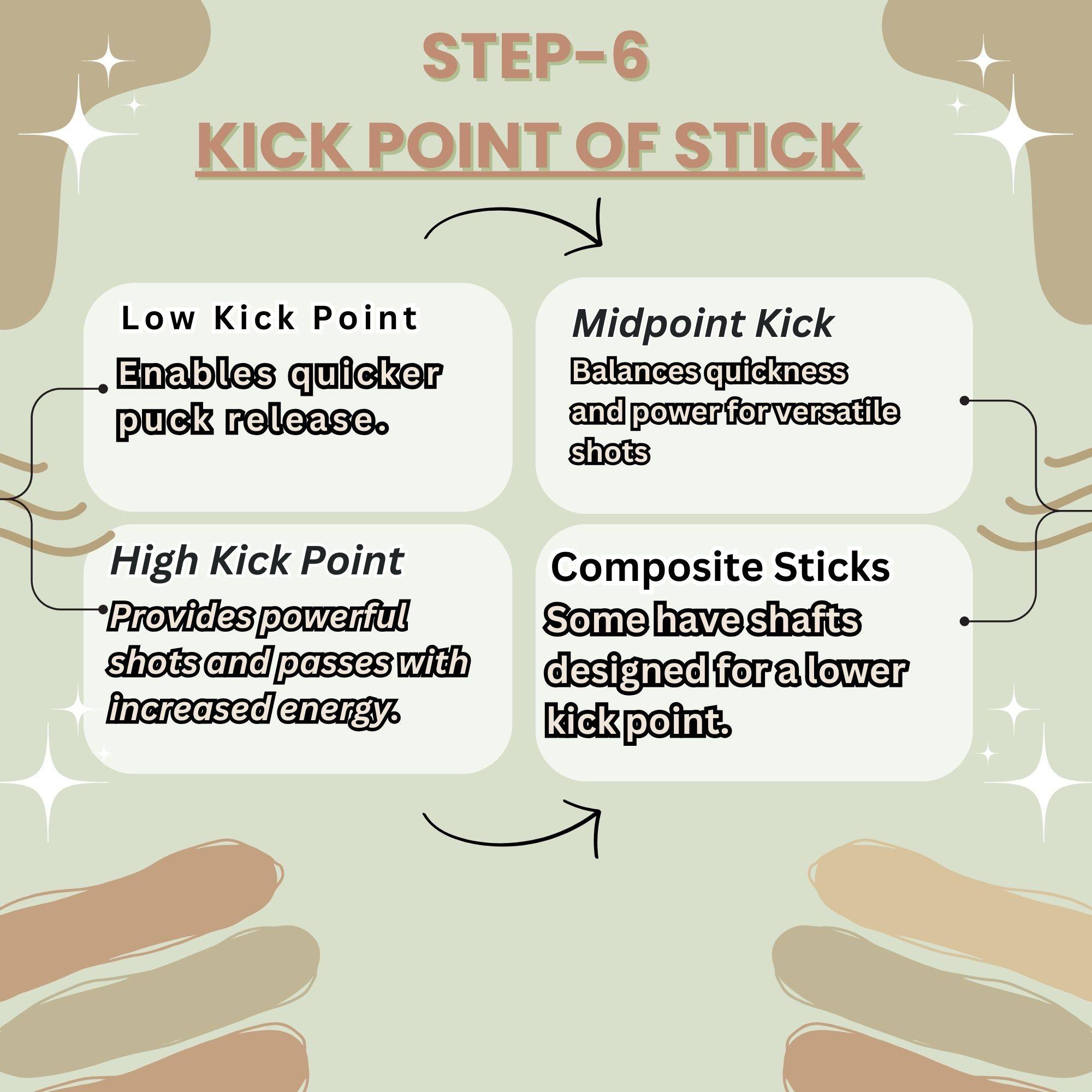
7. Skill Level
Your skill level is a significant factor in choosing the right hockey stick. Here’s how to select based on your experience:
- Beginner Sticks: Designed for players aged 10 years or younger, these sticks focus on control and help develop fundamental skills. They are often lightweight and made from forgiving materials.
- Intermediate Sticks: Suitable for players aged 10-13 with 1-2 years of experience, these sticks emphasize control and key elements to elevate your game.
- Advanced Sticks: Designed for players aged 13+ with 2+ years of experience, these sticks offer a balance of power and control to help players refine their skills.
- Elite Sticks: Made for highly skilled players with 3+ years of experience, these sticks deliver precision and power. They are typically made from premium materials and come at a higher price point.
- Choosing a stick that matches your skill level ensures that you maximize your performance and continue to improve.
Conclusion
Whether you’re just starting your hockey journey or you’re a seasoned player, selecting the right hockey stick is essential to achieving your best performance. From stick length and composition to flex, blade curve, and weight, every factor plays a role in determining how well the stick suits your playing style.
This guide has highlighted the most critical points to consider when choosing a hockey stick. By understanding your needs and preferences, you can select a stick that not only complements your skill level but also enhances your overall gameplay. If you’re new to hockey, this guide will serve as a helpful starting point. For experienced players, it’s an excellent way to refresh your knowledge and stay informed about the latest advancements in hockey stick technology.
Remember, the right hockey stick can make all the difference on the field. Take your time to assess your requirements, try out different options, and invest in a stick that will help you excel in this dynamic and exciting sport. Happy playing!
click here to see varities of hockey stick:

